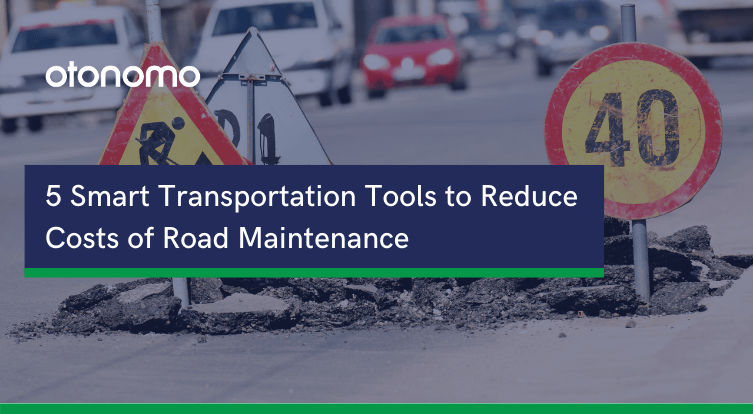Maintaining and monitoring roads is no easy (or cheap) task. The US federal highway commission will spend 46 billion USD in 2022 on road maintenance and operations alone.
With such huge expenses, any improvement in efficiency, cost-effectiveness and resource management translates into huge savings. Thanks to vehicle data, mobility intelligence, and platforms that power the mobility economy, new smart transportation tools can be used to reduce costs and access more accurate information about what’s happening on the roads.
1.Pre-emptive maintenance
Connected vehicles are literally everywhere. There will be 470 million connected vehicles on the roads by 2025. By leveraging these vehicles to report on road conditions through friction data and understanding it through driving patterns analyses and other tools, we can see problem spots on the roads, and map out potential problems before they occur.
Getting ahead of potential road damage does not only prevent costly unplanned road closures and overtime, but also helps citizens to make arrangements. Pre-emptive maintenance also often means that the actual work is cheaper to perform.
2. Better data-powered planning
Everybody wants new roads, and everyone seems to think that they are the ones stuck in traffic. Only through the analysis of true data can a decision be made about when and where it is optimal to add a new lane.
With the help of computer models and simulations based more on data than assumptions, long-term decisions can be made even before commuters begin complaining or experiencing frustration.
3. Smarter transportation for less
Accessing the data required for implementing intelligent transportation measures, like preemptive maintenance and data-driven planning, requires monitoring and collection tools.
In the past, these included expensive measures like embedding sensors in the road, CCTV systems, manual data collection by humans, and other costly methods. According to NBC news, smart roads cost about $4 million per lane per mile, about double the cost of traditional roads. Creating this kind of obsolete infrastructure is a huge waste of money.
Instead, many stakeholders understand that it is better to get the data from connected vehicles themselves. This data is not only much cheaper to collect but is also future-proof as it updates whenever new models hit the road.
4. Dynamic congestion management
Reducing congestion, whether it’s for sustainability reasons like lowering emissions or supporting businesses and individuals in making the roads easier and quicker to use, is a worthy goal.
Integrating traffic lights and dynamic signage systems with real-time or near-real-time data from road users and the vehicles themselves means you can manage the actual congestion. This is instead of a best-guess pre-set pattern of movement which may or may not apply to the reality on the road.
Intelligent transportation management based on this kind of data can support even more adaptive models – for example, opening a deliveries-only lane, clearing routes for buses at peak times and more. Better data means smarter transportation decisions.
5. Prove ROI with more data at your disposal
The Federal Highway Administration estimates that for every single dollar that is spent on improving roads, highways and bridges, the ROI is more than 5x that at $5.20. These savings are just one in a wide range of benefits, including reduced fuel consumption, decreased traffic and congestion, improved safety, and lowered direct maintenance costs.
It is nigh impossible to monitor and measure these benefits with traditional methods. And yet all of them can be tracked using connected vehicle data. If you’re looking to prove the ROI of improvements to your executives or to decision-makers in your organization, you’re going to need the numbers to back it up. By collecting the data from connected vehicles, you can immediately refer to details such as reduced fuel usage or congestion, and even a before and after picture of traffic accidents or maintenance call-outs.

Smart transportation needs smarter data
There’s no doubt that improving roads, highways, bridges and other public services is in everyone’s best interests, from the residents and visitors using these services to the municipalities that offer the improvements.
However, one cannot ignore the financial considerations of road maintenance and monitoring. A platform that provides better data and tools can be utilized to preempt road repairs, cut down on costly infrastructure, better manage traffic flow, augment intelligent traffic signals, and gain a truly holistic understanding of your entire city or location.
Want to learn more about how to power your mobility economy? Just click here to chat with one of our industry experts.









